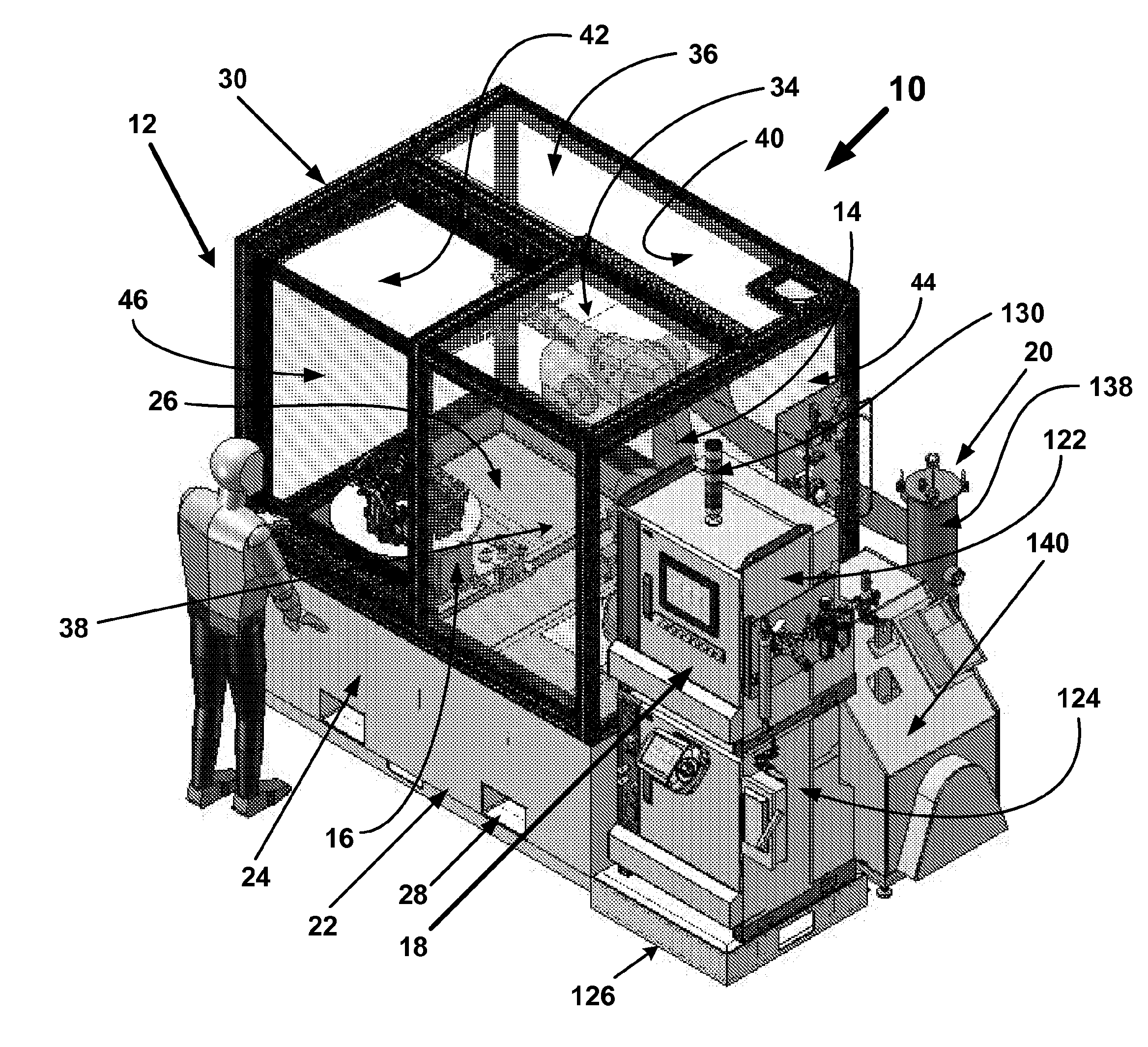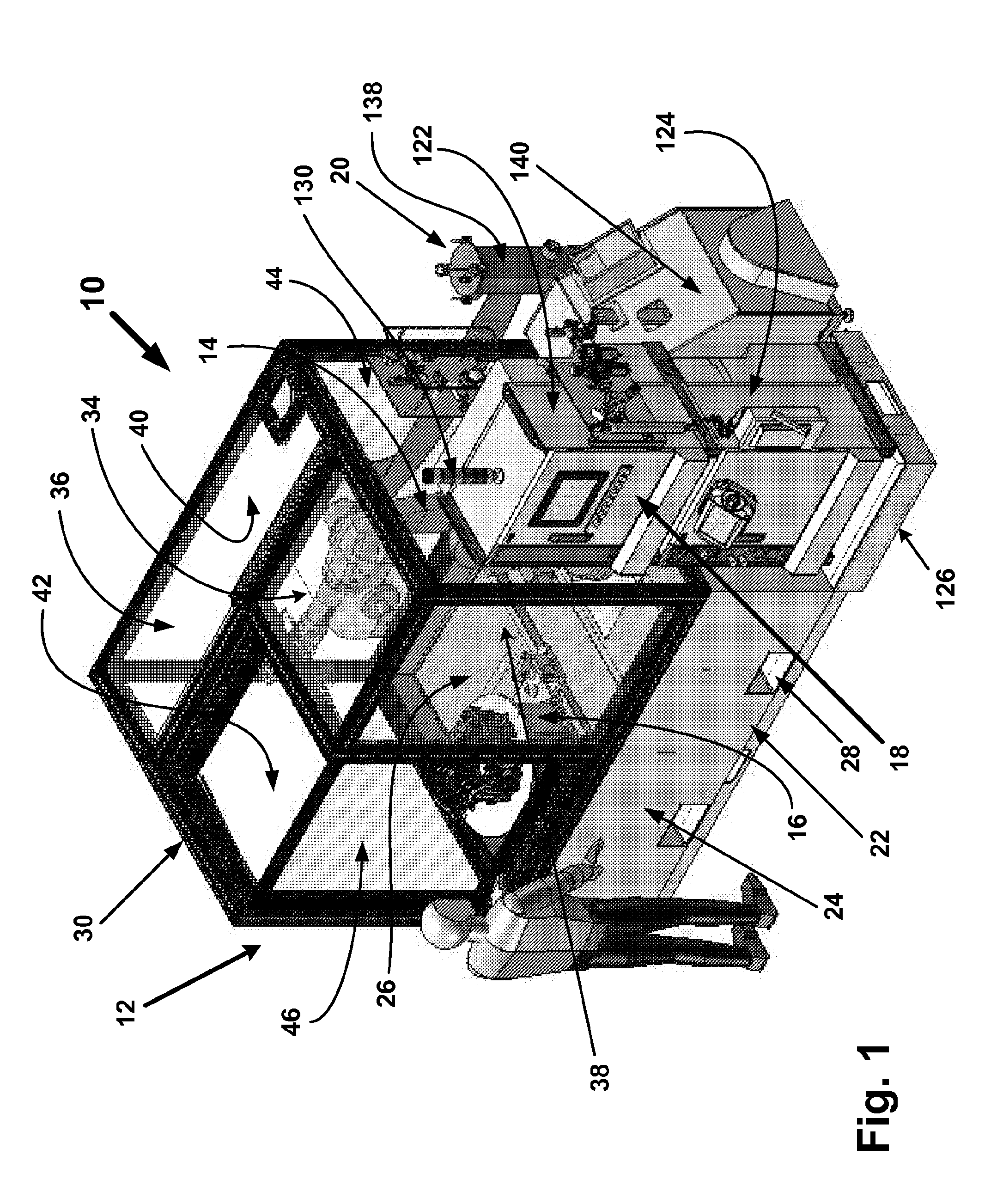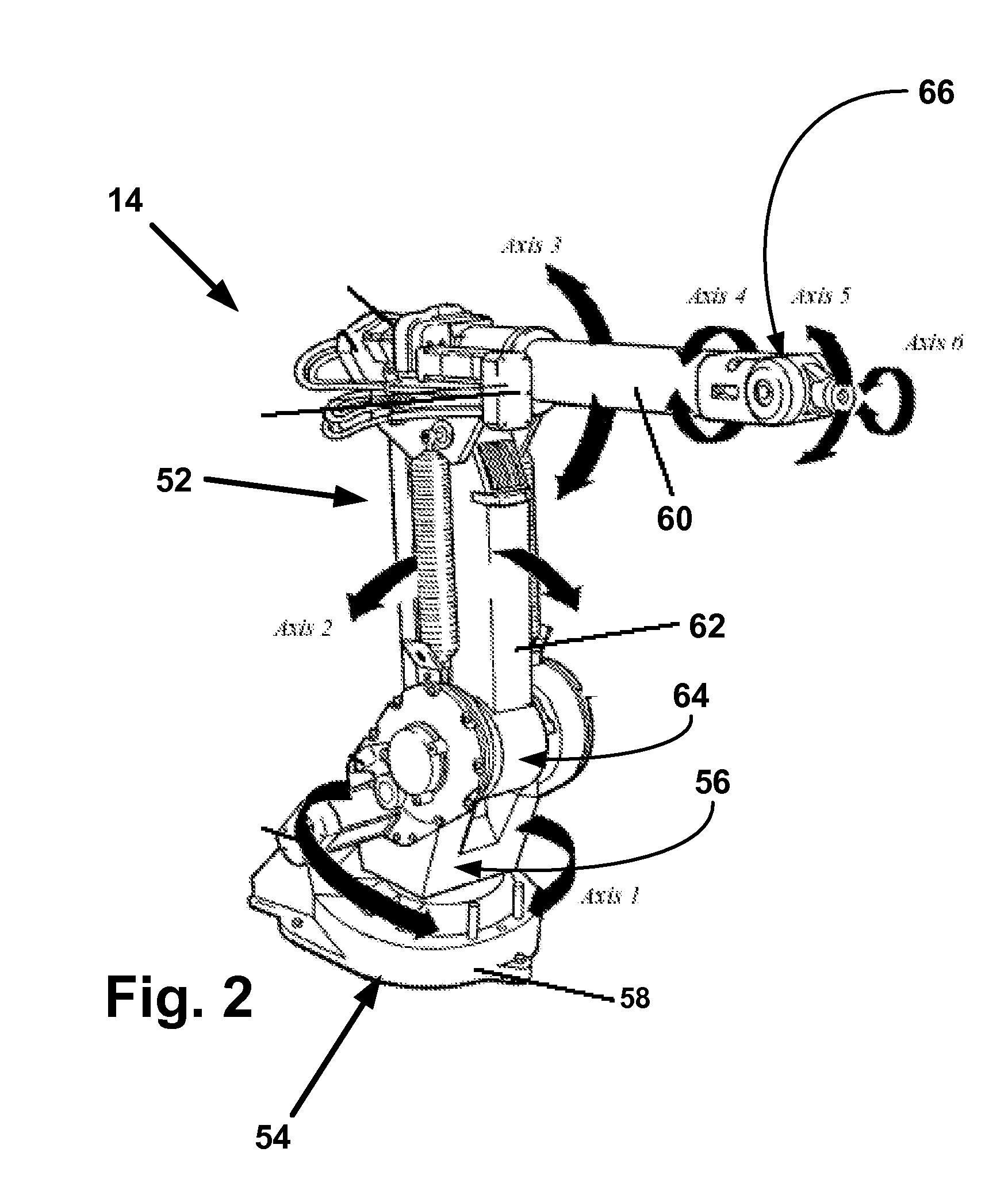Compact and modular robotic wash system
- Summary
- Abstract
- Description
- Claims
- Application Information
AI Technical Summary
Benefits of technology
Problems solved by technology
Method used
Image
Examples
first embodiment
[0020]Referring now to FIG. 1, there is shown a first washer unit 10 constructed in accordance with the present invention. The first washer unit 10 has a compact construction and a small footprint, which is well suited for applications where only limited space is available. The first washer unit 10 generally includes a booth 12, a robot 14, a holding stand 16, a control system 18 and a fluid filtration system 20. The robot 14 and the holding stand 16 are disposed inside the booth 12.
[0021]The booth 12 includes a base structure 22 having a pair of opposing side walls 24 and a pair of opposing end walls, which help support a floor 26. Each side wall 24 has a pair of fork lift pockets 28 adapted for receiving the tines of a fork lift, respectively. At least a portion of the floor 26 disposed around the holding stand 16 is grated and has a multitude of openings to permit water to flow therethrough. The side walls 24, the end walls and the floor 26 cooperate to define a lower access spac...
second embodiment
[0045]Referring now to FIG. 8, there is shown a second washer unit 200 constructed in accordance with the present invention. The second washer unit 200 is larger than the first washer unit 10, but also has a compact construction and a relatively small footprint. The second washer unit 200 generally includes a main booth 202, a robot 204, a control system 18, a fluid filtration system 206 and optionally a pre-rinse chamber 208 and a drying chamber 210. The robot 204 is disposed inside the main booth 202.
[0046]The booth 202 includes a rectangular top enclosure 210 secured to a bottom base structure 212 that encloses an interior sump for receiving water passing through a floor 214 of the base structure 212. The enclosure 210 cooperates with the floor 214 to define an interior wash chamber. The enclosure 210 includes a top panel 216, opposing side panels 218 and first and second end panels 222, 224, each of which may be constructed from sheet metal, such as stainless steel. First and se...
PUM
 Login to View More
Login to View More Abstract
Description
Claims
Application Information
 Login to View More
Login to View More - R&D
- Intellectual Property
- Life Sciences
- Materials
- Tech Scout
- Unparalleled Data Quality
- Higher Quality Content
- 60% Fewer Hallucinations
Browse by: Latest US Patents, China's latest patents, Technical Efficacy Thesaurus, Application Domain, Technology Topic, Popular Technical Reports.
© 2025 PatSnap. All rights reserved.Legal|Privacy policy|Modern Slavery Act Transparency Statement|Sitemap|About US| Contact US: help@patsnap.com



